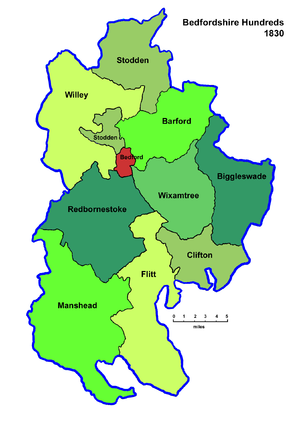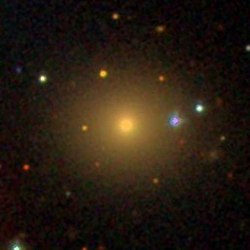171 G. 퍼피스
171 G. Puppis| 관찰 데이터 에폭J2000.0에쿼녹스J2000.0 | |
|---|---|
| 콘스텔레이션 | 퍼피스 |
| 적경 | 07h 45m 35.02168s[1] |
| 적위 | - 34° 10° 20.5143°[1] |
| 겉보기 등급(V) | 5.38[2] |
| 특성. | |
| 스펙트럼형 | F9 V[3] |
| U-B 색지수 | - 0.085[2] |
| B-V 색지수 | +0.56[2] |
| 아스트로메트리 | |
| 반지름 속도(Rv) | +102.6[4] km/s |
| 고유운동(μ) | RA: +10.32[1] mas/년 Dec.: - 802.46mas[1]/년 |
| 시차()) | 65.75 ± 0.51 mas[1] |
| 거리 | 49.6 ± 0.4 리 (15.2 ± 0.1 pc) |
| 절대 등급(MV) | +4.57[5] |
| 세부 사항 | |
| 171 퍼피스 A | |
| 덩어리 | 0.81[6] M☉ |
| 표면 중력(log g) | 4[6].24gs |
| 온도 | 5,852[6] K |
| 금속성 [Fe/H] | - 0.81덱스[6] |
| 회전 속도(v sin i) | 4.4[5] km/s |
| 기타 명칭 | |
| 데이터베이스 참조 | |
| 심바디 | AB |
| A | |
| B | |
| ARICNS | A |
| B | |
171 꼭두각시자리(171 Pup)는 아르고나비스의 선미인 꼭두각시자리에 있는 겉보기 등급 +5.38의 삼중성계이다[8].바이어 명칭이 없기 때문에 굴드 명칭으로 알려져 있습니다.시차 측정에 따르면 이 시스템은 태양계로부터 49.6광년 떨어져 있다.
내부 쌍성은 약 10년 주기로 분광 쌍성을 형성합니다.2011년에는 72.1°[9]의 위치 각도에 따라 309.8±1.6ms의 각도 간격이 있었다.내부 쌍으로부터 2.81°의 위치 각도를 따라 869.65º의 각도 간격으로 Van Biesbroeck 3 또는 WD 0743-340이라는 공통 고유 운동 동반자가 있습니다.이 별은 DC11.0 등급에 4,600 K의 온도를 가진 백색왜성으로 알려진 가장 [10]차가운 백색왜성 중 하나입니다.
레퍼런스
- ^ a b c d e van Leeuwen, F. (2007), "Validation of the new Hipparcos reduction", Astronomy and Astrophysics, 474 (2): 653–664, arXiv:0708.1752, Bibcode:2007A&A...474..653V, doi:10.1051/0004-6361:20078357, S2CID 18759600.
- ^ a b c Mermilliod, J.-C. (1986), Compilation of Eggen's UBV data, transformed to UBV (unpublished), SIMBAD, Bibcode:1986EgUBV........0M.
- ^ Gray, R. O.; et al. (July 2006), "Contributions to the Nearby Stars (NStars) Project: spectroscopy of stars earlier than M0 within 40 pc-The Southern Sample", The Astronomical Journal, 132 (1): 161–170, arXiv:astro-ph/0603770, Bibcode:2006AJ....132..161G, doi:10.1086/504637, S2CID 119476992.
- ^ Evans, D. S. (June 20–24, 1966), "The Revision of the General Catalogue of Radial Velocities", in Batten, Alan Henry; Heard, John Frederick (eds.), Determination of Radial Velocities and their Applications, Proceedings from IAU Symposium no. 30, vol. 30, University of Toronto: International Astronomical Union, p. 57, Bibcode:1967IAUS...30...57E.
- ^ a b Ammler-von Eiff, Matthias; Reiners, Ansgar (June 2012), "New measurements of rotation and differential rotation in A-F stars: are there two populations of differentially rotating stars?", Astronomy & Astrophysics, 542: A116, arXiv:1204.2459, Bibcode:2012A&A...542A.116A, doi:10.1051/0004-6361/201118724, S2CID 53666672.
- ^ a b c d Bensby, T.; et al. (2014), "Exploring the Milky Way stellar disk. A detailed elemental abundance study of 714 F and G dwarf stars in the solar neighbourhood", Astronomy & Astrophysics, 562 (A71): 28, arXiv:1309.2631, Bibcode:2014A&A...562A..71B, doi:10.1051/0004-6361/201322631, S2CID 118786105.
- ^ "171 Pup -- Double or multiple star", SIMBAD Astronomical Database, Centre de Données astronomiques de Strasbourg, retrieved 2016-08-11.
- ^ Tokovinin, Andrei; et al. (July 2012), "Revealing Companions to Nearby Stars with Astrometric Acceleration", The Astronomical Journal, 144 (1): 10, arXiv:1204.4206, Bibcode:2012AJ....144....7T, doi:10.1088/0004-6256/144/1/7, S2CID 30955275, 7.
- ^ Tokovinin, Andrei (August 2012), "Speckle Interferometry and Orbits of "Fast" Visual Binaries", The Astronomical Journal, 144 (2): 11, arXiv:1206.1882, Bibcode:2012AJ....144...56T, doi:10.1088/0004-6256/144/2/56, S2CID 118586009, 56.
- ^ Holberg, J. B.; et al. (November 2013), "Where are all the Sirius-like binary systems?", Monthly Notices of the Royal Astronomical Society, 435 (3): 2077–2091, arXiv:1307.8047, Bibcode:2013MNRAS.435.2077H, doi:10.1093/mnras/stt1433.


